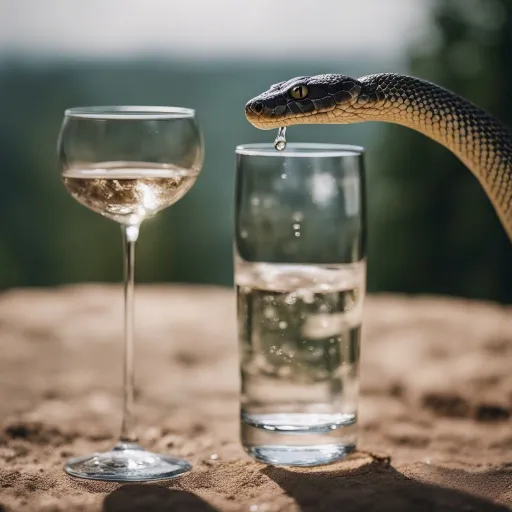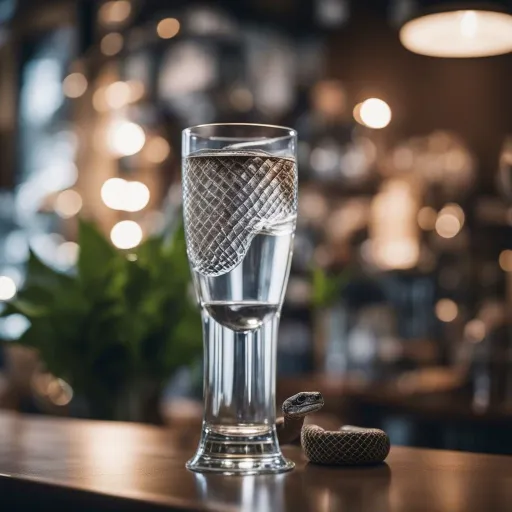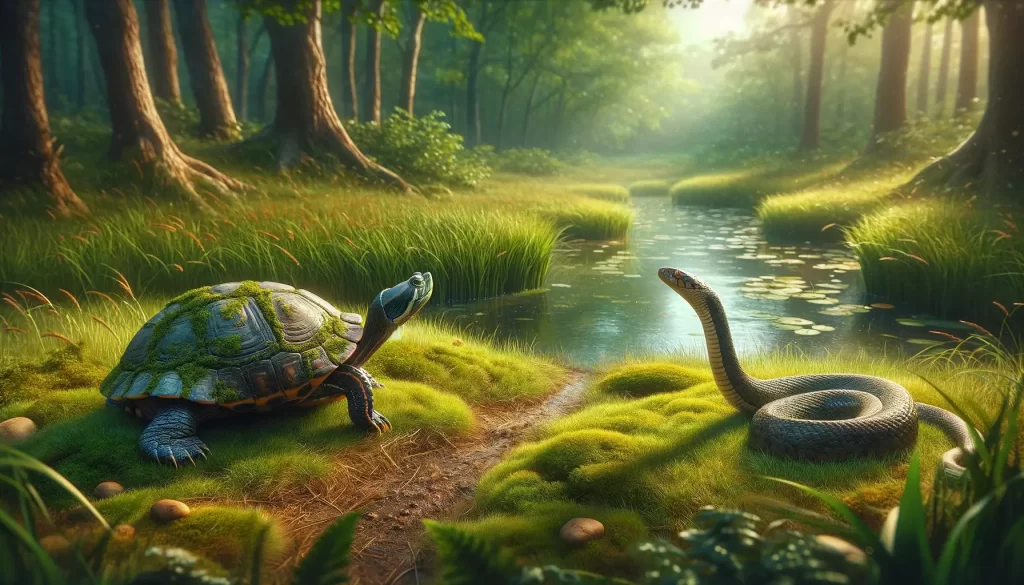Have you ever wondered how often snakes need to quench their thirst? Well, in this article, we will explore the interesting world of snakes and their hydration habits.
Understanding how often snakes drink water is not only fascinating but also crucial for their overall health and well-being.
From the mesmerizing patterns of their scales to their slithering movements, snakes have always captivated our curiosity.
But have you ever stopped to think about their drinking habits? Let’s dive into the world of these mystical creatures and uncover the secrets of their water consumption.

Introduction
About snakes and their water intake
Snakes, fascinating creatures of the reptile world, have unique water intake requirements. Unlike mammals, which have a constant need for water due to their high metabolic rates, snakes have evolved to tolerate longer periods of water deprivation. This ability is a result of their efficient water conservation mechanisms and adaptations to their environment. Understanding the factors that affect snake water consumption, as well as the signs of dehydration and appropriate watering techniques, is crucial for snake owners to ensure their pet’s well-being.
Factors Affecting Snake Water Consumption
Size and Age
The size and age of a snake play a significant role in its water intake. Younger snakes, especially hatchlings, have higher water requirements due to their rapid growth and metabolism. As snakes mature and reach adulthood, their water needs decrease. Additionally, larger snake species generally require more water than smaller ones, as their overall body mass and metabolic needs are greater.
Species
Each snake species has its own unique water intake requirements. Some species, such as water snakes and those inhabiting humid environments, have a higher need for water due to their natural habitats. On the other hand, desert-dwelling snakes are adapted to arid conditions and can survive with limited water intake for extended periods. Understanding the specific needs of your snake’s species is essential in providing appropriate hydration.
Habitat
The habitat in which a snake resides greatly influences its water consumption patterns. Snakes living in moist environments, like forests or near bodies of water, have easier access to water sources and may require less frequent drinking. Conversely, snakes inhabiting arid regions, such as deserts, have limited water sources and have adapted to survive with less regular water intake.
Activity Level
The activity level of a snake can affect its water intake. Snakes that are more active, such as those engaged in hunting or mating behaviors, tend to need more water to compensate for the increased metabolic demands. Conversely, snakes in a sedentary or hibernation state may have reduced water requirements during periods of inactivity.
Environmental Conditions
The environmental conditions in which a snake is kept can also influence its water intake. Factors such as temperature, humidity, and lighting play a role in the snake’s overall physiological functions and water requirements. Snakes kept in environments with high temperatures and low humidity may need more frequent access to water to prevent dehydration.
Frequency of Water Intake in Snakes
Thirst Regulation
Snakes possess efficient mechanisms for regulating thirst, allowing them to adapt to their often limited water sources. When faced with dehydration, snakes can conserve water by reducing their activity levels and metabolic rate. They also have the ability to reabsorb water from their urine to retain as much moisture as possible.
Natural Water Sources
In the wild, snakes rely on natural water sources such as rivers, lakes, and rainwater accumulated in crevices or hollows. Many snake species have specialized behaviors and adaptations that enable them to access and utilize these water sources. Some snakes are adept swimmers, while others are known to absorb moisture through their skin by rubbing against damp substrates.
Captive Snakes
Captive snakes have their water intake regulated by their owners. The frequency of water offered to captive snakes varies depending on factors such as the species, size, and environmental conditions. Providing access to a constant supply of fresh, clean water in a shallow bowl is recommended. However, it is important not to overdo watering, as stagnant water can lead to bacterial growth and pose health risks to the snake.
Snakes’ Adaptations for Water Conservation
Body Structure and Function
Snakes have unique physiological adaptations that enable them to conserve water. Their highly efficient kidneys allow for the reabsorption of water from their urine, minimizing water loss. Additionally, snakes have scaly skin that helps reduce moisture evaporation. These adaptations allow snakes to survive with less frequent water intake than other animals.
Ability to Survive without Drinking
Snakes have evolved to survive in environments with limited water availability. Their ability to go extended periods without drinking is due to their efficient metabolism and water-conserving mechanisms. Snakes can obtain the required moisture from their prey, utilizing the fluids present in their food as a water source.
Behavioral Modifications
In response to water scarcity, snakes have developed various behavioral modifications. Some species, like the sidewinder rattlesnake, have the ability to bury themselves in cool sand, reducing water loss through evaporation. Other snakes may shelter under rocks or vegetation during periods of drought to minimize water expenditure. These behavioral adaptations help snakes conserve water and survive in their respective habitats.

Signs of Dehydration in Snakes
Sunken Eyes
One of the most noticeable signs of dehydration in snakes is sunken eyes. When a snake is dehydrated, its eyes may appear recessed or less plump than usual. This is a result of fluid loss and can indicate a need for immediate hydration.
Wrinkled Skin
Dehydrated snakes may exhibit wrinkled, dry, or dull skin. The loss of moisture leads to a lack of skin elasticity, causing it to become visibly wrinkled or rough. Monitoring the skin condition is crucial in determining the hydration status of a snake.
Reduced Mobility
Dehydration can also affect a snake’s mobility. When lacking sufficient water, snakes may become lethargic, sluggish, or exhibit reduced movement. This is a result of the body conserving energy and minimizing water loss through physical activity.
Loss of Appetite
A sudden or prolonged loss of appetite can indicate dehydration in snakes. Dehydrated snakes may show a lack of interest in food or refuse to eat altogether. Adequate hydration is necessary for maintaining proper digestive function and appetite.
Watering Techniques for Pet Snakes
Providing a Water Bowl
One of the simplest and most effective ways to provide water to a pet snake is by offering a shallow water bowl within its enclosure. The bowl should be large enough for the snake to fit in comfortably, allowing it to drink or soak if desired. Regularly cleaning and refilling the water bowl is essential to prevent bacterial growth and maintain water quality.
Mist or Spray Bottles
For certain snake species, misting or spraying water droplets within the enclosure can mimic natural environmental conditions and stimulate drinking behavior. This method can be particularly useful for snakes that inhabit humid or forested environments, as it provides moisture for both drinking and skin absorption.
Soaking or Bathing
Some snakes benefit from periodic soaking or bathing sessions. This is especially true for species that naturally spend time near water sources or have a higher water intake requirement. Allowing the snake to soak in shallow water for a short period can help ensure proper hydration and promote healthy shedding.
Monitoring Water Intake
Regularly monitoring a pet snake’s water intake is crucial to detect any changes or potential dehydration. Knowing your snake’s typical water consumption patterns and observing any deviations can help identify potential health issues. Keeping a record of the amount of water consumed or the frequency of drinking can aid in providing appropriate hydration.
Common Misconceptions about Snakes and Water
Snakes Need Frequent Watering
Contrary to popular belief, snakes do not require frequent watering like other pets. Their ability to adapt and conserve water allows them to go for extended periods without drinking. Overwatering a snake can lead to unsanitary conditions, respiratory problems, and other health complications.
Snakes Drink Milk
One common misconception is that snakes drink milk. In reality, snakes are carnivorous and do not consume milk as part of their natural diet. Offering milk to a snake can be harmful, as they may have difficulty digesting it and may suffer from digestive issues or infections.
Snakes Get Water Only from Their Prey
While it is true that snakes can obtain moisture from their prey, they still need access to a separate water source to fulfill their hydration needs adequately. Depending solely on the fluids present in their food can lead to inadequate water intake and potential dehydration.
Final Thoughts
Understanding Snakes’ Water Needs
In conclusion, understanding the factors affecting snake water consumption and their unique adaptations for water conservation is essential for snake owners.
By providing access to clean water, following appropriate watering techniques, and recognizing the signs of dehydration, owners can ensure their pet snakes remain healthy and hydrated.
Remember, while snakes have the ability to tolerate periods without drinking, it is vital to offer water to maintain their well-being.
By nurturing a comprehensive understanding of your snake’s species, size, habitat, and individual needs, you can provide optimal care and promote a long, happy life for your scaly companion.



